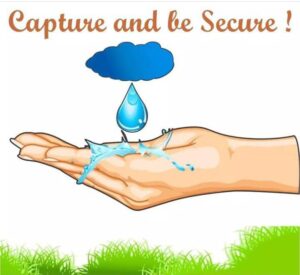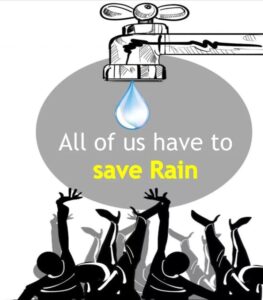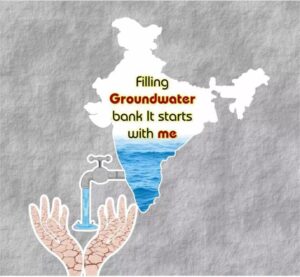Everyone appreciates that water security is an important issue for India. However, water management has been on an unsustainable path for centuries. Water security has progressively deteriorated over the years for many reasons. First is population growth. In 1947, total population of un- divided India was 390 million. By 2050, it is estimated to reach 2206 million, a 5.66-fold increase in around 100 years. Second is rapid urbanization. In late 1980, India did not have a single megacity with more than 10 million people. Today it has five: Delhi, Mumbai, Kolkata, Bengaluru and Chennai. Soon Hyderabad and Ahmedabad will join them. Third is India’s economic growth. As the country has industrialized, its industrial water requirements have gone up significantly. Between 2000 and 2025 it is expected to increase three-fold.
As population, urbanization and industrialization have increased, more water is needed for production of food as well as generation of electricity for supply to urban areas in ever-increasing amounts. While Central and State Governments always focused on increasing water supply to meet higher demands, no serious effort has ever been made to manage, and efficiencies of water uses in domestic, agricultural and industrial sectors can be significantly improved through better management practices, including the use of economic instruments, adoption of new technologies and instilling a Rainwater harvesting among all Indians to value, preserve and protect water.

In addition to water availability problem, India is also facing an even more serious issue of water quality. Decades of neglect have affected all water bodies in and around urban centres, which are now seriously polluted. Situation is so bad that I do not know a single household in urban India that dares to drink water straight from the tap! To survive and cope with poor water situation, each household in India had to turn itself into a mini utility so that it can convert 3–5 h of interrupted water supply during the day into a continuous water supply on a 24 × 7 basis. Individual houses have installed their treatment systems to ensure that water can be drunk without health concerns.
Consider the following facts. Currently only about 8% of India’s Rainwater is harvested, diverted to respective resource. All water bodies, including rivers, lakes and aquifers, within and near urban centres are now heavily contaminated with all types of pollutants. The situation is getting progressively worse as appropriate and timely actions by the administration are still unsatisfactory.

Indian utilities, for the most part, heavily subsidize water. In some states like West Bengal water is free. In Delhi, a family of five, using an average of 130 litres per person per day, need not pay for water. Therefore, there is little incentive for most Indian households to use water efficiently.
India’s poor water management practices, both in terms of quantity and quality, were not serious issues even in 1960s, because its population, urbanization and economic growth were not large. The situation has changed dramatically since 1970s, when the domestic water supply problems have steadily worsened. Much of the water use in India, say 75–82% is for agriculture. The domestic sector uses probably about 5–6%, followed by the industrial sector. Although anecdotal evidence indicates that in India, like in most other developing countries, the share of agricultural water is gradually declining and industrial water is increasing, in real terms, total water use for agriculture is probably increasing. Thus, if India has to become water-secure, the share of water for agriculture must be efficiently managed and reduced.
Agricultural water use has always been inefficient. It has worsened from the early 1970s, when the World Bank insisted that for agricultural loans, farmers must have free and 24 h supply of electricity so that they can pump groundwater. Not surprisingly, this policy was successful in increasing food production over the medium term, but at very high medium- and long-term economic and environmental costs. Free electricity to the farmers has resulted in at least two major problems. First, during the following decades, all State Electricity Boards had major financial problems. Since then, there has been some tinkering with the policy of free electricity supply to farmers. However, as known all over the world, once a subsidy is provided, it is politically difficult to withdraw it.
Second, Farmers are withdrawing too much water, much more than what crops require. As a result, groundwater levels in large areas of India are declining steadily. In certain parts, groundwater levels are declining by 3–4 m/yr. In India’s breadbasket Punjab, groundwater levels have been in a steady decline for the last 4–5 decades. Similar situations can be observed in most other Indian states, including Rajasthan, Haryana and Maharashtra. Indo- Gangetic aquifer is the second most depleted aquifer in the world. All these have medium- to long-term implications for India’s water security.
As groundwater levels decline, farmers need more electricity to pump water from greater depths. This increases the financial losses suffered by electricity supply companies. Also, farmers must install higher capacity pumps regularly so that they can lift water from deeper and dee- per levels. Accordingly, sustainability of groundwater management in India is becoming a dream.

Despite the work of Central Ground Water Board, little reliable information is available on where the aquifers are, what are their sizes, how much water they contain, what are their annual recharge or depletion rates, and their qualities. Without such essential information, it is impossible to develop plans as to their sustainable use.
While India’s water future currently looks bleak, there is no reason why it should be so. The country has enough expertise to solve its water problems. It has access to technology and investment funds to ensure a sustainable water future. For this, ‘business unusual’ solutions need to be implemented. Only a few solutions will be discussed here.
There is currently not even a single Indian city where any household receives water that it trusts to be fit to drink. Most Indian households do not even receive 24 × 7 water supply from water utilities. This is not because utilities do not have enough water to provide all households 87624 × 7 supply. Due to decades of continuous poor management of water utilities, Indian households have been forced to become ‘mini’ water utilities. Most households receive 2–4 h of water supply a day. They have con- structed underground tanks to store water. They also have overhead tanks to which water is pumped from under- ground tanks. Thus, utilities may provide intermittent water supply but the Indian households have converted it to 24 × 7 water availability. The water that comes to a house is then treated so that its quality is improved. At simplest level, treatment may mean boiling water. Well-off families mostly use reverse osmosis (RO) to purify the water for drinking.

India’s Passionate Rain Water Harvesting Company
